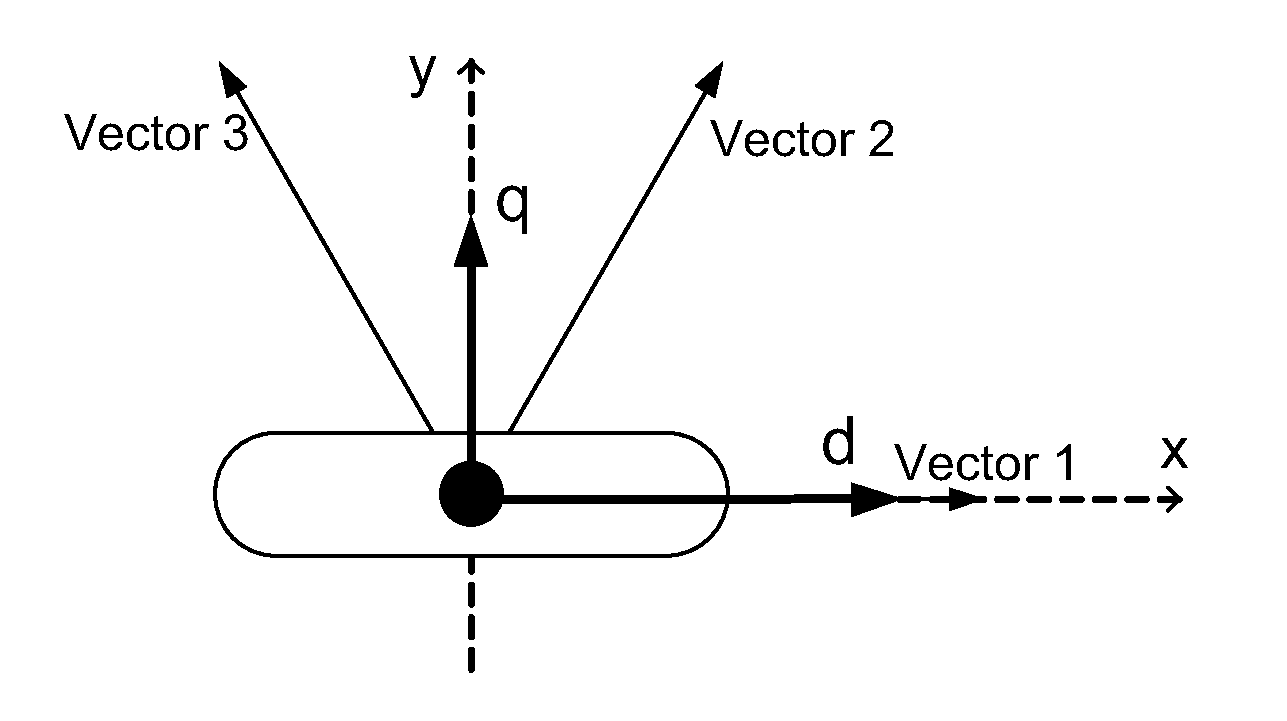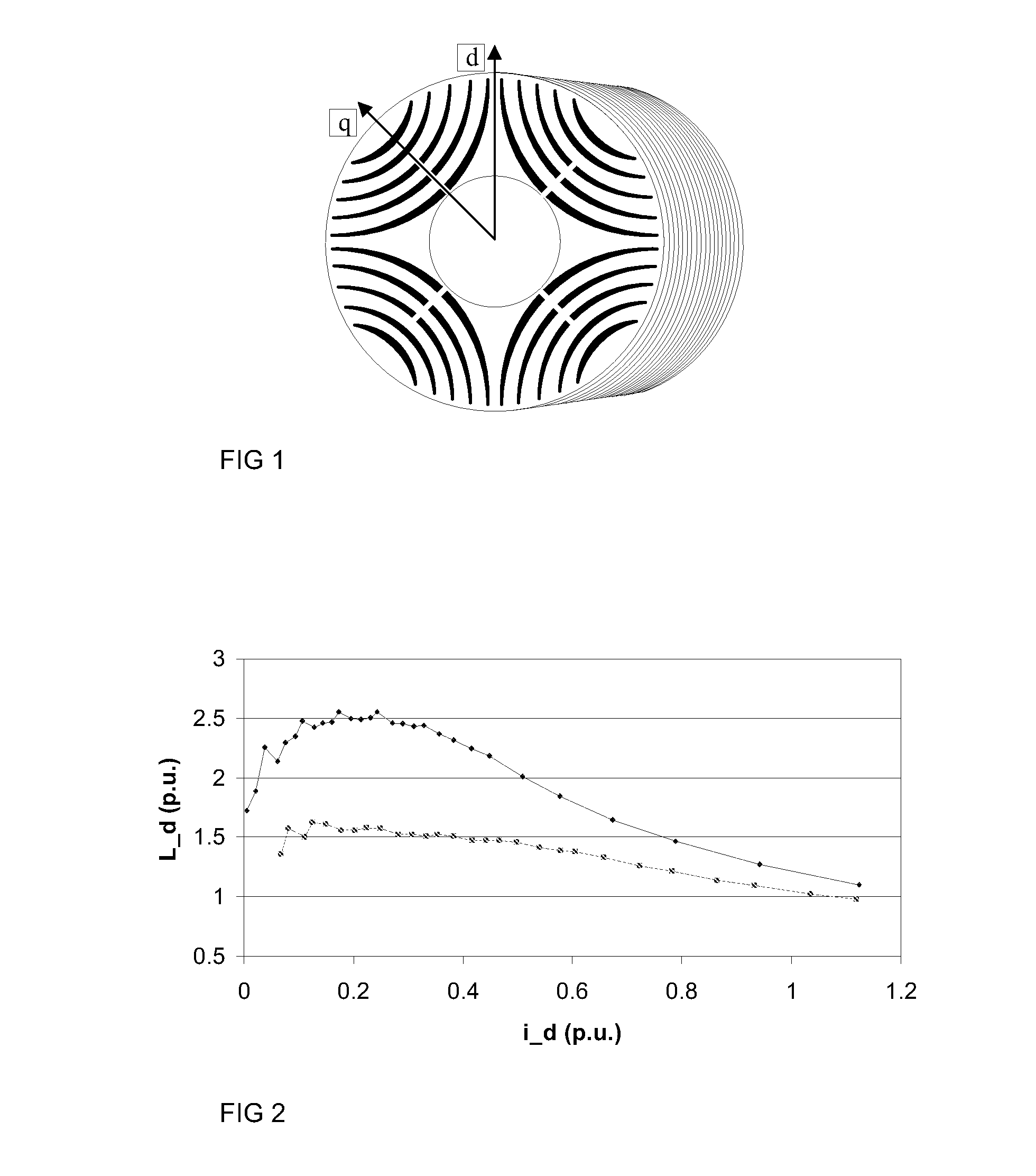Method and arrangement for determining inductances of synchronous reluctance machine
a synchronous reluctance machine and inductance technology, applied in the direction of resistance/reactance/impedence, instruments, data acquisition and logging, etc., can solve the problems of difficult optimization of the production of torque, inability to operate correctly, and inability to optimize the production of torqu
- Summary
- Abstract
- Description
- Claims
- Application Information
AI Technical Summary
Benefits of technology
Problems solved by technology
Method used
Image
Examples
Embodiment Construction
[0017]Exemplary embodiments of the present disclosure provide a method and an arrangement of determining inductances of a synchronous reluctance machine. The exemplary method and arrangement solve the problems noted above with respect to known techniques.
[0018]In accordance with an exemplary embodiment of the present disclosure, the saturation behavior of inductances of synchronous reluctance machines is determined with different pulse tests using an inverter connected to the machine. Both synchronous inductances and transient inductances of the synchronous reluctance machine can be determined using a series of pulse tests.
[0019]Synchronous and transient inductances are illustrated in FIG. 7, which shows a graph obtained during inductance measurement. Flux is plotted as a function of measured current. Synchronous inductance is the slope of the line that is drawn from the origin to a selected point of the curve, e.g., to a point, the inductance of which is of interest. This is a well...
PUM
 Login to View More
Login to View More Abstract
Description
Claims
Application Information
 Login to View More
Login to View More - R&D
- Intellectual Property
- Life Sciences
- Materials
- Tech Scout
- Unparalleled Data Quality
- Higher Quality Content
- 60% Fewer Hallucinations
Browse by: Latest US Patents, China's latest patents, Technical Efficacy Thesaurus, Application Domain, Technology Topic, Popular Technical Reports.
© 2025 PatSnap. All rights reserved.Legal|Privacy policy|Modern Slavery Act Transparency Statement|Sitemap|About US| Contact US: help@patsnap.com



